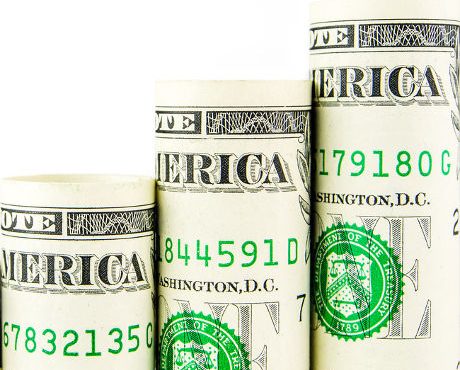Unilever plc (ADR) (NYSE:UL) is a unique company. So before going into the details of the dividend opportunity in UL stock, let’s address the distinction that exists in the company.
Unilever is a single economic entity that is controlled by two holders known as Unilever plc (ADR) (NYSE:UL) and Unilever N.V. (ADR) (NYSE:UN). The entity Unilever was formed through the 1930 merger of U.K. company Lever Brothers and Dutch company Naamloze Vennootschap Margarine Unie.
The merger architects decided that it would be better to operate Unilever as two companies, whereby one is based in the U.K. and the other in the Netherlands. That is why you have two Unilever stocks listed in the U.S. as UL stock (Unilever London) and UN stock (Unilever Netherlands).
The idea of running Unilever as two companies was aimed at maximizing shareholder value, as it would avoid subjecting shareholders to what the merger architects considered to be punitive taxes.
With this said, something that international income investors should keep in mind is that dividends on the two Unilever stocks are subject to different tax treatments. While dividends on UN stock are subject to a 15% withholding tax, dividends on UL stock are not. (Source: “Unilever N.V. Dividend Reinvestment,” Unilever.com, last accessed September 30, 2016.)
Dividend Payout for UL Stock
Unilever declared a quarterly dividend for 2Q 2016 of $0.3531 per share, which was distributed on September 7, 2016. In 1Q 2016, the company paid a dividend of $0.3648 per share, which was a boost from the $0.3296 paid in the prior quarter. (Source: “PLC ADR Share Dividend History,” Unilever.com, last accessed September 30, 2016.)
Unilever’s quarterly dividend of $0.3531 per share works out to an annualized dividend of $1.41 and represents a dividend yield of three percent. As such, you can see that Unilever has a higher dividend yield than the industry average of 1.84%. (Source: “UL Stock Dividend Data,” Dividend.com, last accessed September 30, 2016.)
Though Unilever’s dividend payout ratio of about 70% seems to be high, this is the range of its industry peers. Besides, Unilever stock doesn’t carry a heavy debt burden; its debt-to-equity ratio is just about 0.75 with an interest coverage ratio of 15. As such, the company’s lofty dividend payout ratio looks sustainable.
In the past five years, Unilever stock has increased its dividend payout by an average of 7.73% per year. Over the past 10 years, the company has boosted its dividend by an average of 6.4%, signaling steady multi-year dividend growth.
Unilever stock has boosted its dividend payout consecutively for at least 36 years and that speaks of the company’s stable and dependable business model, making it a reliable income investment.
However, due to currency fluctuation, those looking at Unilever’s dollar-denominated dividend may struggle to see improving dividend payout at Unilever. You see that Unilever stock’s 2015 dividend actually shrank 12.8%, while 2014 dividend rose 6.9%. You can blame a weaker euro and a stronger dollar for Unilever stock’s seemingly inconsistent dividends in the recent years. When the euro is subdued by the dollar, currency conversion results in a smaller dividend amount, which is what has been happening of late. However, in constant-currency terms, Unilever’s dividend has actually been growing.
Unilever Stock’s Dividend Future
Unilever is a fast-moving consumer goods company and its peers are Procter & Gamble Co (NYSE:PG) and Nestle SA. The company’s well-known brands include “Lipton,” “Hellmann’s,” “Heartbrand” ice cream, “Axe,” and “Dove.”
The company’s business spans food, personal care, home care, and refreshment products. Unilever’s products are so ubiquitous that it is estimated that two billion people use them every day.
To boost its personal care business, Unilever forked out $1.0 billion earlier this year to acquire Dollar Shave Club. (Source: “Why Unilever Really Bought Dollar Shave Club,” Bloomberg, July 20, 2016.)
UL stock has a global operation spanning Asia, the Americas, the Middle East, and Europe. In the recent years the bulk of the company’s revenue has tended to come from emerging and developing economies. That suggests massive growth potential for the company as it penetrates more emerging markets and brings more innovative products to market.
Unilever can bet on an expanding middle class in those developing economies to fuel its sales in the coming years. The company’s established brands also continue to do well in developed markets, which provides crucial support as Unilever continues to invest to grow its business in emerging economies.
As part of the efforts to boost profitability and sustain dividend payments, UL stock has been divesting less profitable assets to focus its business on higher margin products. The company’s massive distribution network and expanding international presence are other advantages that it enjoys over the competition. Additionally, Unilever holds strong pricing power that supports stable earnings growth.
However, Unilever’s business is not without risks. Fierce competition from equally well-established rivals such as PG and Nestle means that the company struggles to maintain customer loyalty. Furthermore, as Unilever grows its presence in emerging markets, it is becoming more exposed to economic uncertainties in those markets, which on a bad day could have material adverse impact on its financial performance.
Perhaps something more that dividend investors might want to know about Unilever stock is that the company is a leading champion of sustainable business. Through its “Unilever Sustainable Living Plan,” the company is committed to completely shifting away from hydrocarbon fuels in its operations as it embraces sustainable sources of energy such as solar and wind.
